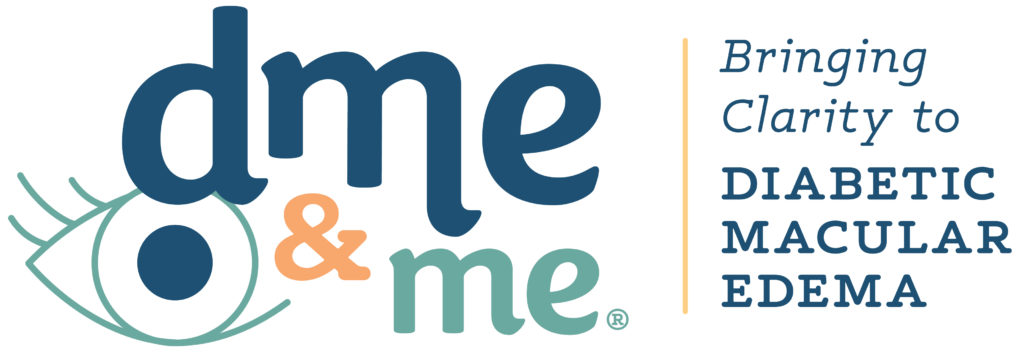Did you know that if left untreated, Diabetic Macular Edema can lead to damage to your eye that is irreversible? One of the results can often be permanent loss of vision. If you are a person with diabetes and your sight has been deteriorating over time or you’ve had an injury that prevents your eyes from functioning properly, there are different treatment options and steps you can take to maintain or even improve your vision.
So, what is diabetic macular edema? It’s a condition that causes damage to the retina in those with diabetes and diabetic issues. We are going to explain what DME actually is, how to recognize warning signs early on, your treatment options, and tell you what to do if you have any concerns. Keep reading as we discuss five common questions about this condition in detail.
What Are the Most Common Risk Factors of Diabetic Macular Edema?
There are various factors that can put you at risk DME, but the most common ones are high blood sugar levels and damage to the retina. Other risk factors can include:
- High blood pressure
- Smoking
- Complications from pregnancy or childbirth
- Damage to blood vessels in the eye
Additionally, people who have had diabetes for a long time are more likely to get DME, as well as those with poor blood sugar control. Other risk factors include high blood pressure as mentioned above, being overweight or obese, and having a history of retinal detachment.
If you have any of these risk factors, it’s important to be aware of the signs and symptoms of DME. Let’s find out how to recognize early warning signs of DME.
What Are Some Early Warning Signs?
As we’ve discussed, DME is a condition that causes swelling in the central part of the retina. When this happens, it can lead to vision problems or even blindness. While some people do not experience any symptoms at all and may go undiagnosed for years, there are many early warning signs you should look out for if you have diabetes. Some of these signs could be:
- Decreased vision
- Distorted or blurred vision
- Straight lines appearing wavy (like looking through water)
- Dark spots forming in your visual field
If you are experiencing any of these symptoms, make sure to always consult with your doctor or seek emergent care if the symptoms develop quickly with associated issues such as chest pain.
How Is Diabetic Macular Edema Diagnosed?
Diabetic macular edema is diagnosed in a number of ways. The best way to diagnose DME is by having a comprehensive eye exam. Along with an eye exam, the patient’s medical history will be reviewed.
A specialist, often times a retina specialist, will review these things to determine if there are any risk factors or signs that suggest the patient may have diabetic macular edema. They might also take images of the back of your eyes using special equipment, such as a retinal camera. These images can help to recognize any signs of swelling or damage and can guide a physician in making their diagnosis.
How Is It Treated?
There are three main treatment options for diabetic macular edema (DME). Depending on your symptoms, your eye doctor may recommend anti-VEGF, corticosteroid, or laser treatment paths, and may include a combination of treatments.
Anti-VEGF Treatments
Anti-VEGF treatments are a class of drug that blocks or slows development of new blood vessels and limits leakage from existing ones. These drugs are typically injected into the eye monthly or every other month such as a drug called bevacizumab, aflibercept, or ranibizumab.
Corticosteriods
There are two FDA-approved corticosteroid implant treatment options to reduce DME and improve vision. These treatments work by targeting the inflammation and swelling in the retina. Your eye doctor may recommend treatment with dexamethasone, which releases a dose of corticosteroid over a few months, or with fluocinolone acetonide (FAc), which can be a single injection that consistently treats DME for up to 36 months.
Laser Treatments
Laser therapy is used to stop bleeding in the retina caused by abnormal blood vessels leaking into this area by cauterizing these blood vessels.
Is There a Cure for Diabetic Macular Edema?
There are several different treatment options for diabetic macular edema (DME). Depending on diagnosis, severity, and previous patient medical history among other factors, physicians may treat DME with a variety or combination of therapies. Three main types of therapies are anti-VEGF injections, corticosteroid injections, and laser treatments.
Anti-Vascular Endothelial Growth Factor (VEGF) inhibitor therapy (or anti-VEGF) is a class of drug that blocks or slows development of new blood vessels and limits leakage from existing ones. These drugs are typically injected into the eye monthly or every other month.
There are two corticosteroid drugs that are FDA approved to reduce DME and improve vision. These drugs work by targeting the inflammation and swelling in the retina. One drug is usually injected every few months. A second option is designed to release a very low dose of corticosteroid consistently and continuously for up to 36 months with a single injection.
With laser photocoagulation, your ophthalmologist directs a laser into the back of the eye and cauterizes leaking blood vessels in the retina.
Always Stay Aware
Now that you know the five commonly asked questions about diabetic macular edema, you should know what it is, how to identify early symptoms, and what to do if you’re experiencing them. If you are experiencing any of the early warning signs listed above, or have been diagnosed with diabetes, it is important to consult with your doctor as soon as possible if you have any concerns or think you may have or be developing DME.
Your eye doctor will be able to perform tests to determine if you have DME and advise on the best course of treatment for you if you do. If you’re interested in more information on DME, click here.


